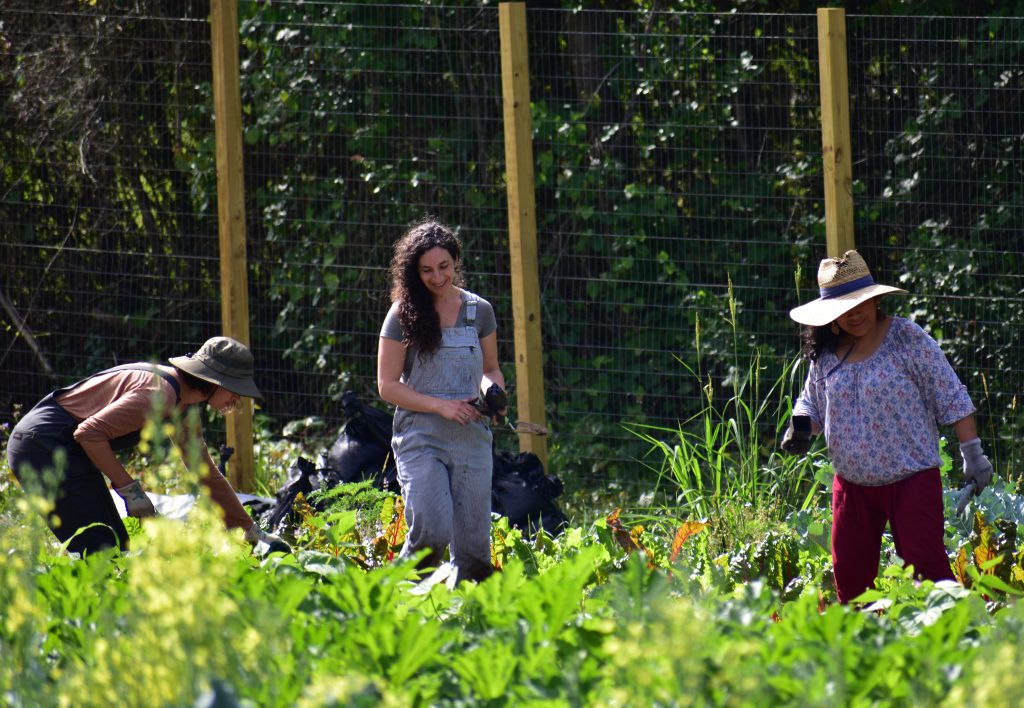
Saving Our Soil
Restoring soil health turns out to be one of the most important solutions to keeping nutrient pollution out of waterways.
By Fernando Figueroa
It’s time to talk about soil. Dirt, the stuff that makes you dirty, is inert. Soil is a different story. Look at it under a microscope, and you’ll see an oasis.
Worms, bugs, fungi, bacteria, protozoa and nematodes all coexist in the food web of soil. In some cases, they eat one another. In others, they work together to survive.
When plants photosynthesize, they secrete carbohydrates into the soil, attracting bacteria and fungi, said Jeff Lowenfels, author of a series of books on the soil food web.
Both the fungi in the soil and the bacteria eating the carbon-rich ooze are then gobbled by protozoa and nematodes. The waste produced by protozoa and nematodes contains essential nutrients for plant growth.
But not all fungi are consumed, Lowenfells said. The mycelium network, which is made up of underground fungal fibers, plays an essential role in transporting nutrients around in the soil. The fibers also help create a more resilient soil structure, like the glass fibers in fiberglass.
Research suggests that the presence of a fungal network helps seedlings access water even when the vital resource is limited by an overstory of trees. This fungal internet is the communication network among plants.
“[Between] 90 and 96% of all plants have this symbiotic relationship,” Lowenfells said.
The symbiosis club is not exclusive, however. Bacteria, like fungi, can live inside plant roots. Through a series of chemical interactions, they can help elongate root hairs, improving a plant’s nutrient intake, Lowenfells said.

A 2019 study led by the plant biologist James F. White Jr. at Rutgers University found that these root-dwelling microbes can suppress the growth of unwanted weeds and foster hardier, more stress-tolerant crops.
The three most common nutrients used in commercial fertilizer are nitrogen, phosphorus and potassium, although many more nutrients are also essential for plant growth. In healthy soil, these nutrients are naturally abundant.
White’s study suggests that, although the long-term effects of synthetic fetilization and other agrochemicals are unknown, it’s possible that its use has caused a loss in these symbiotic relationships.
At industrial farms, local ecosystems are razed and fertilized to grow plants that may not be ecologically well suited to the region. The once-teeming and thriving soil is reduced to dirt.
All agriculture extracts nutrients from the soil. To maintain a sustainable system, those nutrients need to be replenished to keep growing crops. Sometimes, farmers overfeed crops, adding more fertilizer than is strictly necessary, to assure growth. But by precisely giving plants the nutrients they need at the right times, farmers wouldn’t have to use as much fertilizer, minimizing pollution.
This is part of the idea behind regenerative agriculture, a way of growing food that restores soil health; is mindful of the climate, water and biodiversity; and nurtures farmers and communities.
Returning to the roots
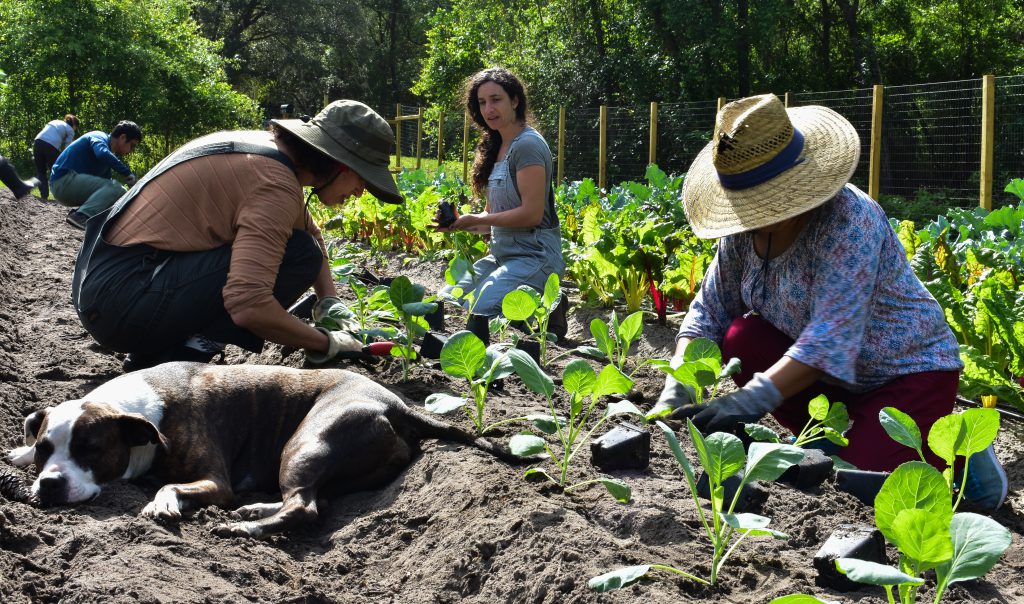
Regenerative agriculture is not defined by a single practice. Improving soil health is broad and context-specific, said Kelly Wilson, assistant director of the Center for Regenerative Agriculture at the University of Missouri. It requires different techniques based on climatic region, soil composition and even consumer demand.
The knowledge that has pioneered “alternative” agriculture movements, such as organic sustainable and regenerative agriculture, is really more original than alternative. It comes from Black, Brown and Indigenous people all around the world, Wilson said.

Many different groups have appropriated and modified that traditional wisdom as people come to understand how valuable it is.
The effects have been wide-reaching, dating back to 20 years with USDA’s adoption of organic standards. In general, crops bearing the organic label cannot have been grown with synthetic substances.
Today, regenerative agriculture is the trend, particularly among small farms. Some of the most common techniques include planting cover crops and composting. Growing a diversity of crops, as opposed to only one, rotational livestock grazing, and limited tilling, which breaks up the soil before planting, are other changes that enrich the soil while providing other benefits.
In addition to depleting the soil, industrial agriculture is also harmful because it is a major driver of climate change through deforestation, over-fertilization and methane emissions from livestock.
In the sandy soils of Gainesville, several farmers have adopted regenerative agriculture practices to grow local, nutritious food, while limiting their fertilizer use and curbing their environmental impact.
Daniel Robleto and Aviva Asher own Nicoya Farms, a one-acre organic farm that is part of a larger, 30-acre property in southeast Gainesville. The property’s eight owners are all old friends who unified in the early 2000s around anarchist politics and the anti-globalization movement, Robleto said.
To prepare the land for farming, Robleto and Asher cleared two forested acres, sparing as many trees as possible. Then, they planted cowpea and tall grass cover crops to establish a good root system to prevent soil erosion. The land was not adequate for growing then, Robleto said, as the soil not fertile enough for the cover crops to thrive.
With cowpeas as a cover crop, bacteria inside the roots of the legumes pulled nitrogen from the atmosphere and produced ammonia, a nitrogen compound plants can absorb. The process is what synthetic nitrogen fertilizer manufacturers emulate in a chemical reaction known as the Haber-Bosch process.
“There were areas where it grew really tall and green where we had burned some brush from clearing,” Robleto said. “And then just past that it would go down to yellow, stunted, almost like a dead zone in the field.”
Another challenge involved the slope of the land. Rainfall would pool toward the center, trickle, then gush over the crop rows, destroying the planting beds, eroding the soil and almost ruining the harvest.
Robleto and Asher learned and adapted. They began planting their crops in crescent-moon shaped beds that force the water around curved sides. Perennial grasses surrounding each field hold the soil together.
Robleto has experimented with other cover crops, including sun hemp, sorghum sudan grass, and buckwheat, which can also help in controlling pests. Ninety days after planting, Robleto will mow down the cover crop, lay a black tarp over the stubble, and let it ferment for three to four weeks.
By then, what used to be a vibrant bend of green will have turned to nutrient-packed mush, he said.
Robleto will then use his tractor to till the ground, dragging a disk implement behind, cutting through the soil, which buries the plant slurry.
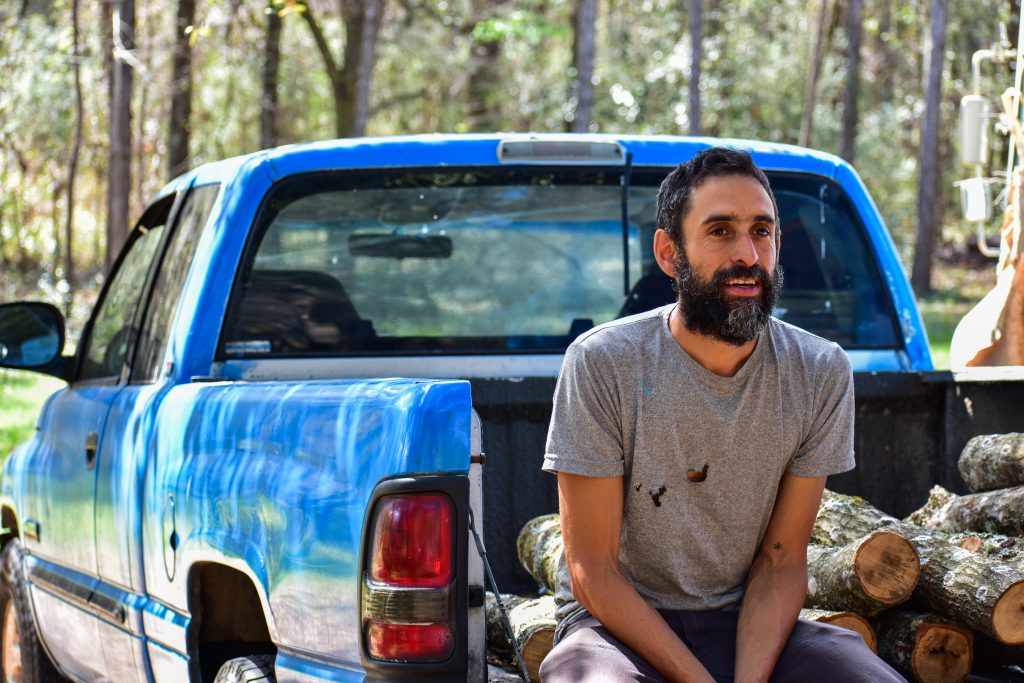
Tilling breaks up crop residue after harvest. However, it can also break up the underground fungal network and cause soil to erode. The deeper the disk cuts, the more damage it can do to soil structure.
He’s thinking of making an implement he can drag behind his tractor to till only the first couple of inches of soil, incorporating the mush. The disk he currently uses knocks the bed down, he said.
By burying the cover crop, farmers can reintroduce organic matter into the soil, which removes carbon from the atmosphere.
Ongoing scientific debate questions just how much carbon can practically be stored in soils without needing to increase farm size farm size for food production and whether it is actually a viable way to bring down the concentration of carbon dioxide in the atmosphere, which today stands at 412 parts per million, the highest in recorded history.
Composting is another way Robleto and Asher reintroduce carbon and nitrogen into the soil on their farm. Their compost is primarily made from mulch and chicken manure, popular with local farmers because it’s abundant.
“We’re not buying Vermont compost and having it shipped in 1,000 miles,” Robleto said.
Florida’s sandy soils have a harder time holding onto nutrients introduced through fertilization, compost or manure. When it rains, these nutrients can end up in groundwater, rivers and lakes, causing harmful algal blooms and other kinds of pollution
Robleto experiments with kalonite clay to help nutrients stick to the soil. In the future, he plans to introduce biochar, which is essentially charcoal. Biochar can help store more carbon in the soil, and its porous surface is perfect for holding water and nutrients.
For now, Robleto continues to use compost every time he plants. He also spreads Nature Safe, an organic fertilizer, before and during planting. Over time, he hopes the regenerative techniques will help reduce the soil’s demand for compost and fertilizer.
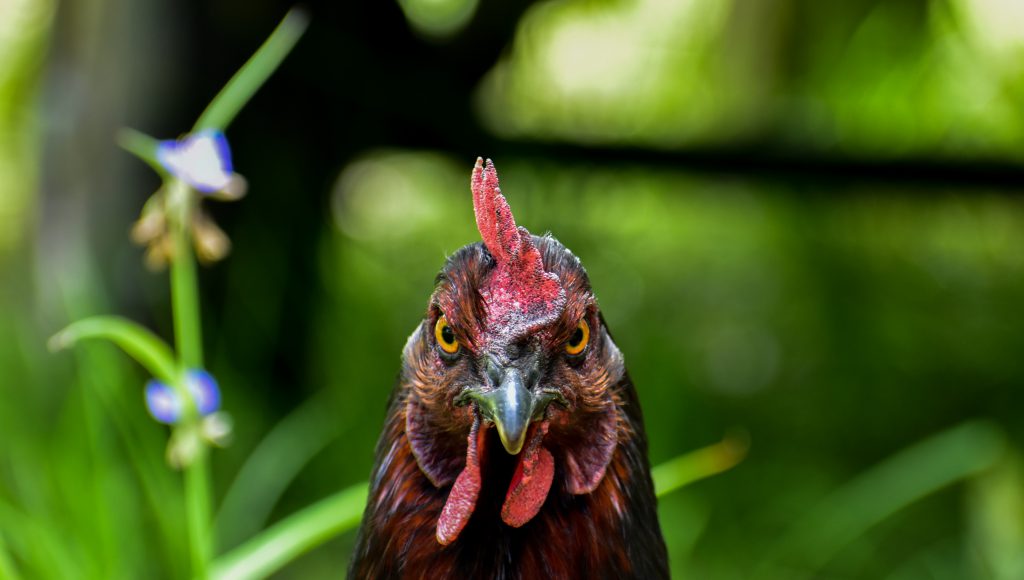
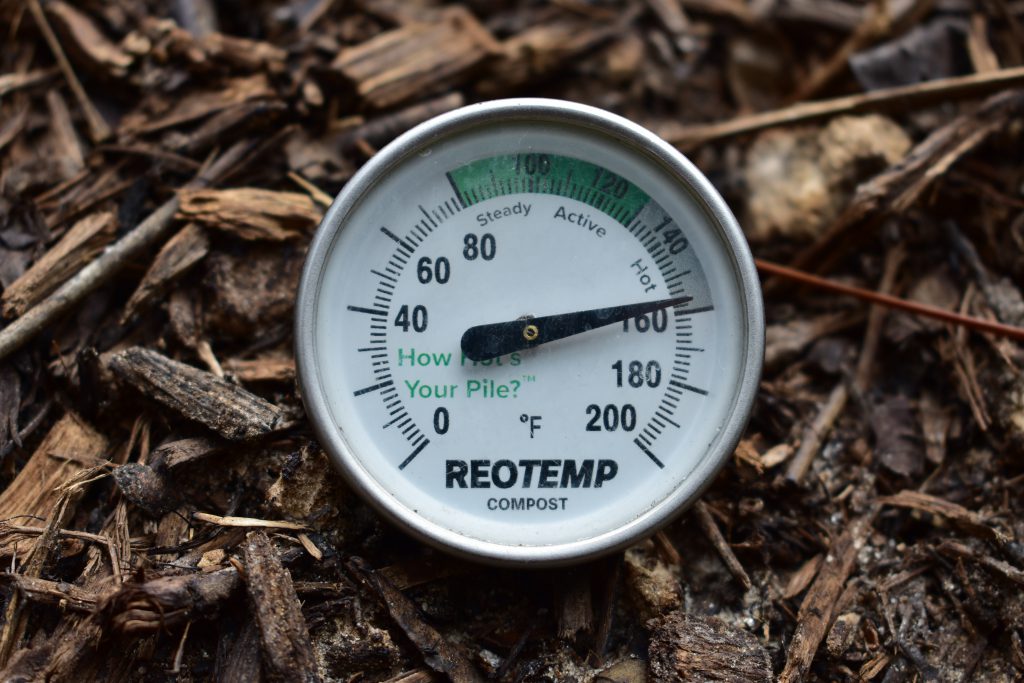
After three years of intensive production, Robleto left a small terrace atop his slanted farm untouched. He initially planted some grasses on the terrace to prevent it from collapsing. Over time, the terrace has grown thick with leftover cover crops, weeds and edibles Florida like wildflowers Biden’s alba and spiderwort.
The terrace draws “pollinators but also just biodiversity in general,” Robleto said. “We want habitat for bees, beneficial insects, and natural predators of pests, so wasps that eat caterpillars.”
Robleto and his fellow farmers also consider the impacts of agriculture beyond their fenceline. Just past the farm, but still on their property, is a forested patch of land marked as a riparian buffer by Alachua County’s Department of Environmental Protection.
This 75-foot strip separating their farm from a wetland and small creek provides some peace of mind that his farm won’t harm ecosystems downstream through fertilizer pollution or erosion. Such buffers also provide wildlife habitat.
Methods to regenerate soil are beneficial individually, but farmers increase their impact by stacking multiple practices together, Wilson said. Adding livestock into the agroecosystem, for example, can add benefits when combined with other practices, she said.
Livestock can distribute manure and forage on cover crops while also stomping on them, helping integrate them into the soil. Some advocates of regenerative agriculture even argue it’s not a truly regenerative system if the farmer is not integrating livestock.
Yet such stacking of different methods makes farming more complex – and also harder to scale.
Sharing and Scaling
Today’s agriculture is geared toward standardization. Farmers across the nation use relatively similar methods to grow crops, especially in large industrial farms that grow strictly one crop, like corn or soybean. So with synthetic fertilizers, pesticides and other standard practices, what works in California might work in Maine – often at the expense of the environment.
Traditional ecological knowledge, which has been acquired by Indigenous people over hundreds or thousands of years, guides regenerative practices. But this knowledge was not developed for large-scale production, Wilson said.
However, some degree of scalability will be needed to grow enough food sustainably, Wilson said. It’s really important that all farmers, big and small, are part of the fight against climate change, she said.
“I hope that there is actually the appetite that is being talked about for some actual transformative change and acknowledgement of past failures,” she said.
The focus should be on local knowledge rather than standardization, she said.
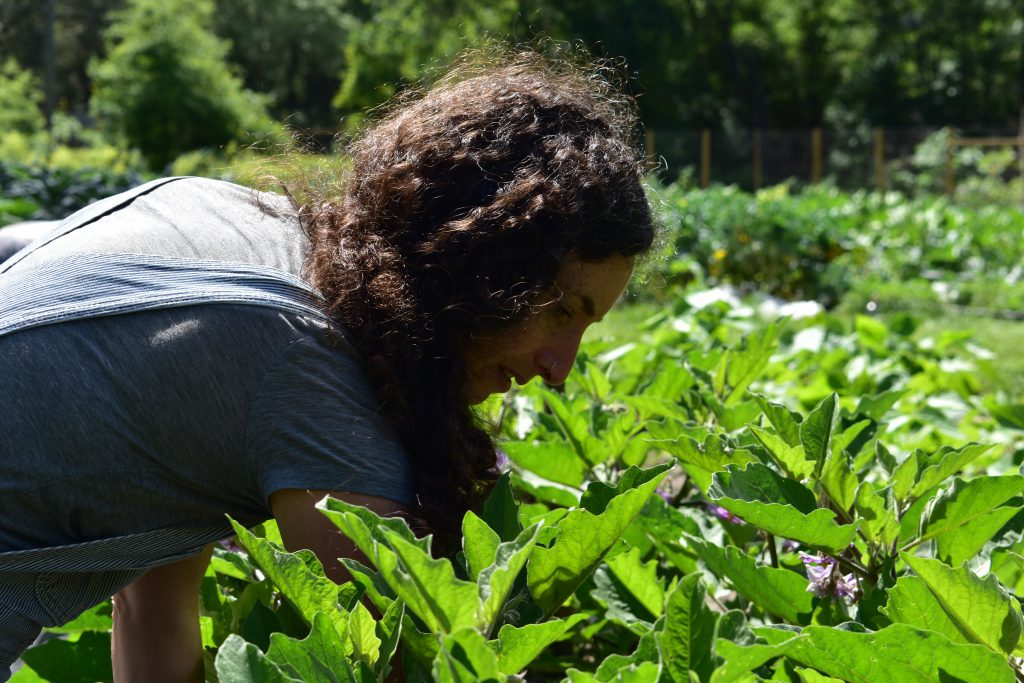
“Farmers tend to listen to other farmers,” Wilson said. “So, you know, that is great, but it also makes it really challenging to provide the right recommendations.”
Access to soil tests, which give farmers a glimpse of their soil’s nutrition levels and knowing what grows well in their region, could engage farmers in more sustainable farming.
Missouri’s Center for Regenerative Agriculture is using a $25 million USDA climate-smart grant to fund precision-agriculture technologies, Wilson said. She is developing a program to finance small-scale farmers with a $10,000 stipend over three years with no barriers to what it can be used for. To apply, farmers put together a plan for stacked regenerative agriculture practices.
This gives them the freedom to be part of the research, tapping into their expertise of their land while also learning about the benefits of improving soil health, Wilson said.
“Every farmer I’ve talked to that’s already a regenerative farmer, they’re like, ‘You won’t believe how my input costs have gone down.’”
Scientists say that regenerating soil is not like planting a magic bean; it cannot solve all the problems related to industrial agriculture. But it offers one solution to the climate crisis, Wilson said, and can sow a path toward change.
That change encompasses both soil and people: Reconnecting with the land, recognizing the impact of industrial agriculture and cooperating with one another to build more resilient food systems.
“Regenerative agriculture,” she said, “is about rebuilding [and] restoring our agricultural and productive resources from soil to people.”
This story is part of The Price of Plenty, a special project investigating fertilizer from the University of Florida College of Journalism and Communications and the University of Missouri School of Journalism, supported by the Pulitzer Center’s nationwide Connected Coastlines reporting initiative.
Read Next: Farms Embrace Regenerative Agriculture Using Mushrooms
 The Price of Plenty
The Price of Plenty